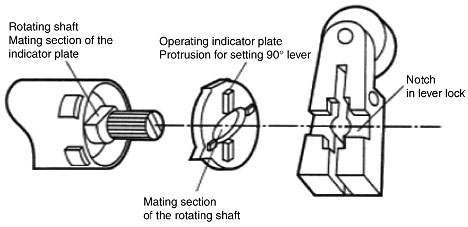What is a form lock mechanism?
Safety Limit Switches use inflexible interlocking components, related to the direct opening mechanism (forcibly opened contacts), so that the components will not distort or come apart even if great force is applied to the Actuator by contact welding or other cause.
The following diagram shows an example using a rotating shaft and lever.
Note 1:
The lever cannot be mounted backwards because the protrusion and notch interlock so that the lever will not free-turn even if a large force is applied.
Note 2:
The Safety Limit Switches with changeable roller levers do not have the form lock mechanism.